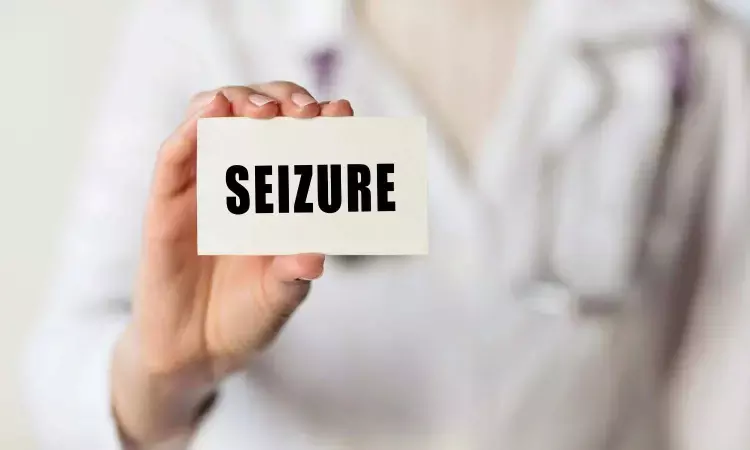- Home
- Medical news & Guidelines
- Anesthesiology
- Cardiology and CTVS
- Critical Care
- Dentistry
- Dermatology
- Diabetes and Endocrinology
- ENT
- Gastroenterology
- Medicine
- Nephrology
- Neurology
- Obstretics-Gynaecology
- Oncology
- Ophthalmology
- Orthopaedics
- Pediatrics-Neonatology
- Psychiatry
- Pulmonology
- Radiology
- Surgery
- Urology
- Laboratory Medicine
- Diet
- Nursing
- Paramedical
- Physiotherapy
- Health news
- Fact Check
- Bone Health Fact Check
- Brain Health Fact Check
- Cancer Related Fact Check
- Child Care Fact Check
- Dental and oral health fact check
- Diabetes and metabolic health fact check
- Diet and Nutrition Fact Check
- Eye and ENT Care Fact Check
- Fitness fact check
- Gut health fact check
- Heart health fact check
- Kidney health fact check
- Medical education fact check
- Men's health fact check
- Respiratory fact check
- Skin and hair care fact check
- Vaccine and Immunization fact check
- Women's health fact check
- AYUSH
- State News
- Andaman and Nicobar Islands
- Andhra Pradesh
- Arunachal Pradesh
- Assam
- Bihar
- Chandigarh
- Chattisgarh
- Dadra and Nagar Haveli
- Daman and Diu
- Delhi
- Goa
- Gujarat
- Haryana
- Himachal Pradesh
- Jammu & Kashmir
- Jharkhand
- Karnataka
- Kerala
- Ladakh
- Lakshadweep
- Madhya Pradesh
- Maharashtra
- Manipur
- Meghalaya
- Mizoram
- Nagaland
- Odisha
- Puducherry
- Punjab
- Rajasthan
- Sikkim
- Tamil Nadu
- Telangana
- Tripura
- Uttar Pradesh
- Uttrakhand
- West Bengal
- Medical Education
- Industry
Nonmotor seizures may be missed in children and teenagers, finds study

Children and teens may experience nonmotor seizures for months or years before being seen in an emergency department for a more obvious seizure that includes convulsions, according to a study published in online issue of Neurology®, the medical journal of the American Academy of Neurology. Even then, the history of nonmotor seizures may not be recognized.
“Early diagnosis of epilepsy is of the utmost importance because epileptic seizures can lead to injury and even death,” said study author Jacqueline French, MD, of NYU Grossman School of Medicine in New York City and a Fellow of the American Academy of Neurology. “Medications can reduce these risks, but our study found that a history of nonmotor seizures was being missed when children and teens were seen in emergency care.”
Subtle, nonmotor seizures have no noticeable movement. Symptoms affect the senses and may include nausea, visual distortions, feelings of déjà vu, or smelling odd odors. Motor seizures involve uncontrolled movements of the arms and legs and include more severe tonic-clonic seizures with full body convulsions.
The study involved 83 children and teens 12 to 18 years old. All were within four months of starting treatment for focal epilepsy, which accounts for more than half of all epilepsy cases and involves recurring seizures that begin in a localized area of the brain. Researchers reviewed participants’ medical records. There were 39 participants whose first seizure was a motor seizure, and 44 whose first seizure was a nonmotor seizure.
Before diagnosis, 58 went to emergency care for seizures. Looking back at medical records, researchers determined for 32, their first seizure was a motor seizure, and for 26, a nonmotor seizure. But when seeking this emergency care, 90% were seen for motor seizures, with 38% of that group having an unidentified history of nonmotor seizures.
There were 17 participants who were seen for their first motor seizure who had a history of nonmotor seizures, but none were recognized at the time as having had prior nonmotor seizures. As a result, they received similar treatment as those experiencing their first seizure, even though they were more advanced in the disease. French noted nonmotor seizures often worsen over time and progress to tonic-clonic seizures when left untreated.
Researchers found those with initial nonmotor seizures were less likely to seek emergency care with only 59% seeking care compared to 82% of those with initial motor seizures.
In emergency care, researchers also found just 33% of nonmotor seizures were correctly identified compared to 81% of motor seizures.
“Participants with nonmotor seizures described symptoms of hearing repeated phrases or jumbled noises, zoning out and episodes of dizziness, yet for many, this history was not collected until they had a tonic-clonic seizure and were referred to a neurologist,” said French. “This highlights a critical need for doctors to ask about these symptoms when someone seeks care for a motor seizure to ensure they get the best care.”
A limitation of the study was that nonmotor seizures may have been underreported, particularly in children who may have had difficulty identifying and communicating the symptoms of those seizures.
Reference:
Nora Jandhyala, Monica Ferrer, Jacob Pellinen, Hadley T. Greenwood, Dennis J. Dlugos, MSCE, Kristen L. Park, Liu Lin Thio, and Jacqueline French, Unrecognized Focal Nonmotor Seizures in Adolescents Presenting to Emergency Departments, Neurology, https://doi.org/10.1212/WNL.0000000000209389.
Dr Kamal Kant Kohli-MBBS, DTCD- a chest specialist with more than 30 years of practice and a flair for writing clinical articles, Dr Kamal Kant Kohli joined Medical Dialogues as a Chief Editor of Medical News. Besides writing articles, as an editor, he proofreads and verifies all the medical content published on Medical Dialogues including those coming from journals, studies,medical conferences,guidelines etc. Email: drkohli@medicaldialogues.in. Contact no. 011-43720751


